Matador Network's Blog, page 1173
January 29, 2019
Gringotts Bank set tours to begin

Gringotts may be the most notoriously difficult bank to enter in the world — at least, in the Harry Potter world — but now they’re letting just about anyone in. For the first time ever, Warner Bros. Studio Tour London — The Making of Harry Potter is offering a tour of the 16,500-square-foot set of Gringotts Wizarding Bank. The set served as the backdrop for some of the most epic scenes in the movies, including Harry, Ron, and Hermione’s polyjuice-fueled mission into Bellatrix Lestrange’s vault.
Lined with huge marble pillars, the grand banking hall will be decorated with massive crystal chandeliers and intricate details like inkwells, quills, ledgers, and piles of Galleons, sickles, and Knuts at the tellers’ desks. Visitors will also be able to see the costumes and prosthetics used by Bogrod, Griphook, and other goblin bankers. After the banking hall, visitors will be led through the Lestrange Vault, where the Sword of Gryffindor and Helga Hufflepuff’s Cup are housed in the film.
Opening on April 6, the bank is the studio’s largest addition to its behind-the-scenes set tours. Tickets must be booked in advance, and run $46 for children 15 and younger, and $56 for adults. 
H/T: Warner Bros.

More like this: 18 real-life places every Harry Potter fan needs to visit
The post The Harry Potter Studio Tour is opening Gringotts Bank to the public this April appeared first on Matador Network.

WOW Air giving away free flights

If your name is Valentine and were made fun of as a kid on Valentine’s Day, you’re about to have the last laugh. WOW Airlines is celebrating Valentine’s Day by giving away free flights to Iceland to the main squeeze of those with the first or last name of Valentine. Flights depart from four major US cities — New York, Boston, Detroit, and Baltimore — and are valid for bookings made between January 24 and February 14, 2019. Travel dates are February 10 to 19, 2019.
To take advantage of this offer, you’ll need to book your WOW Air flight within the appropriate dates, and then send a picture of your passport and booking reference to Valentines@wow.is. After completing this process, passengers named Valentine will have their significant other’s ticket refunded.
It’s important to note that all bookings must be made for two passengers, but refunds will only be issued for one. The refund will consist of the ticket fare, airport taxes, one piece of hand luggage, and one checked bag. Bookings must be made directly through the WOW Air website (not a third-party or travel agent), and for a round-trip flight.
So if your name is Valentine and you’re single, don’t be surprised if your phone starts blowing up in the next few weeks. And if you’re really desperate for a plus one for a trip to Iceland, a certain Matador Network writer might just be available. 
H/T: Secret Flying

More like this: Valentine’s Day in North America is overdone. Here’s why I like celebrating it abroad instead
The post If your name is Valentine, you can fly your sweetie to Iceland for free this Valentine’s Day appeared first on Matador Network.

Skellig Michael visitor regulations

Ireland’s Skellig Michael has become one of the country’s most famous attractions, but it might soon be more difficult for tourists to visit.
The towering rock island in the Atlantic Ocean, home to an early medieval monastic settlement and one of the most important sites for breeding seabirds in Ireland, is a UNESCO World Heritage site, as well as a Statutory Nature Reserve, a Special Protection Area, and a proposed Natural Heritage Area.
But it’s likely the island being one of the filming locations of Star Wars Episode VII: The Force Awakens and Episode VIII: The Last Jedi in 2014 and 2015 that brought the increase of visitors to the site. According to The Irish Times, the numbers have been steadily rising — from 12,560 visitors in 2015 to just under 14,700 visitors in 2016 and 16,755 visitors in 2017. Skellig Michael is open to visitors between mid-May and September 30.
With this influx of visitor numbers comes concerns over the preservation of the site, so Ireland is looking to enact new measures to limit visits further. Several agencies have been asked by the Office of Public Works to prepare new management plans for Skellig Michael. (There was a management plan for the site between 2008 and 2018.)
While nothing is set in stone yet, one proposal — set forth by An Taisce (the National Trust) — calls for the island to “attach a capacity level for visitors equal with safety and the conservation of the site. A strictly-defined limit on the number of visitors in any daily period is needed.” UNESCO has also recommended measures like stricter regulations for boatmen operating tours to the island. 
H/T: Lonely Planet

More like this: The destinations that are the most at risk of overtourism
The post New regulations may make Skellig Michael tougher to visit for ‘Star Wars’ fans appeared first on Matador Network.

January 28, 2019
Most Instagrammed places in the US
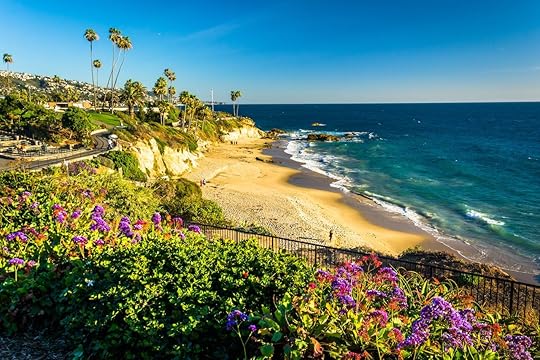
The more jaded travelers among us might say nobody travels anymore; they just go places to collect content for their Instagrams. Which, for a large segment of the population, is probably true. Such is travel in 2019, where the popularity of both people and places is largely gauged on the ‘gram. While we’re not going to pass judgment on any national park, sandy beach, or mouse-eared theme park based on the number of hashtags it got in 2018, Play Picks is happy to do so. The sports-betting tips site that may or may not prognosticate by hashtag found the most Instagrammed locations in America last year. And surprise, surprise, California and Florida dominate the top 20.
20. Laguna Beach
Laguna Beach, California
View this post on InstagramA post shared by Visit Laguna Beach (@visitlaguna) on Jan 28, 2019 at 9:15am PST
Number of hashtags: 1,963,943
This would have easily surpassed Long Beach if Steven, Talan, Kristin, and LC had Instagram back in the day. Or if anyone who uses Instagram was old enough to remember this show.
19. Myrtle Beach
Myrtle Beach, South Carolina
View this post on InstagramA post shared by Visit Myrtle Beach (@mymyrtlebeach) on Nov 15, 2018 at 12:05am PST
Number of hashtags: 1,988,840
Wanna win some free drinks tonight? Ask a group of New Yorkers what’s the most Instagrammed beach outside California and Florida. When they refuse to believe it’s not some beach in the Hamptons nobody outside of New York has ever heard of, bet them a round then pull up this story.
18. Huntington Beach
Huntington Beach, California
View this post on InstagramA post shared by Visit Huntington Beach (@surfcityusa) on Jan 9, 2019 at 12:43pm PST
Number of hashtags: 2,168,437
Surf City, USA, accounted for over two million Instagram posts last year. You might credit its sparkling new food hall at Lot 579, or the redeveloped downtown Main Street, or maybe even the bizarre beachfront oil refinery on the city’s southern border. But we all know HB’s Insta-stardom can be summed up in two words: dog surfing.
17. Newport Beach
Newport Beach, California
View this post on InstagramA post shared by Newport Beach, CA (@newportbeach) on Jan 27, 2019 at 7:02am PST
Number of hashtags: 2,198,907
Lazy, sunny Sunday afternoons strolling out the Newport Pier or bar-hopping from Beach Ball to Malarky’s to Blackie’s before finally ending up, like everyone else, at Cassidy’s probably account for why this is the most Instagrammed beach in the OC. Though frozen bananas are probably what pushes it over the top.
16. Palm Beach
Palm Beach, Florida
View this post on InstagramA post shared by The Breakers Palm Beach (@thebreakers) on Jan 24, 2019 at 7:18am PST
Number of hashtags: 2,226,845
Deleted, late-night posts from Mar-a-Lago not included.
15. Golden Gate Bridge
San Francisco, California
View this post on InstagramA post shared by San Francisco Travel (@onlyinsf) on Jan 2, 2019 at 9:37am PST
Number of hashtags: 2,253,270
If you feel like seeing how your Insta skills stack up to the other 2.2 million people taking pictures of America’s most famous bridge, might we suggest taking a trip to the best roadside viewpoint in California at Battery Spencer Overlook? Just north of the bridge, you’ll find a road on the left that winds its way up the hills with dramatic viewpoints of the Golden Gate, the San Francisco skyline, and all of San Francisco Bay.
14. Yosemite National Park
Mariposa, California
View this post on InstagramA post shared by Yosemite National Park (@yosemitenps) on Oct 1, 2018 at 1:26pm PDT
Number of hashtags: 2,310,940
Just hope all those people who saw Free Solo realize exactly zero of these selfies are from Alex Honnold while he was climbing El Capitan. But someone won’t.
13. Key West
Key West, Florida
View this post on InstagramA post shared by Key West (@visitkeywest) on Jan 23, 2019 at 6:30pm PST
Number of hashtags: 2,475,318
Fantasy Fest, the annual Halloween party where “nothing” constitutes a perfectly acceptable Halloween costume, is the single-most hashtagged event of the year in Florida’s quirky little island at the end of US-1. Because some things can never be unseen, it’s probably best viewed in Instagram too.
12. Santa Barbara Beach
Santa Barbara, California
View this post on InstagramA post shared by Visit Santa Barbara (@visitsantabarbara) on Jan 23, 2019 at 7:42pm PST
Number of hashtags: 2,642,067
Some consider Santa Barbara the most perfect place in America, with all the perfect Southern California weather that makes people flock to LA — without all the people who flock to LA. The only reason it doesn’t rate higher is that the city is full of charming Spanish architecture, wine country, and fabulous restaurants, so sometimes the beach gets left behind.
11. Epcot, Walt Disney World
Orlando, Florida
View this post on InstagramA post shared by Walt Disney World (@waltdisneyworld) on Nov 12, 2018 at 9:04am PST
Number of hashtags: 2,800,199
This might actually rank higher than the Magic Kingdom if all the people who took selfies in front of the Eiffel Tower actually admitted it was in Central Florida.
10. The Grand Canyon
Arizona
View this post on InstagramA post shared by GrandCanyonNPS (@grandcanyonnps) on Jun 24, 2018 at 10:41am PDT
Number of hashtags: 2,868,557
This works out to roughly two hashtags per acre in massive Grand Canyon National Park. Or 1,505 per square mile. Or two per foot along its 277-miles. But you know what? They’re ALL in the exact spot you’re trying to take a picture from at the South Rim.
9. Venice Beach
Los Angeles, California
View this post on InstagramA post shared by Venice Beach Skate Park (@venicebeach.skatepark) on Apr 16, 2018 at 3:45pm PDT
Number of hashtags: 3,186,917
Sure, you can see Venice’s skaters, bodybuilders, street performers, and sunsets on Instagram. But the thick scent of weed in the air? That you can only experience by checking out the real thing.
8. Times Square
New York, New York
View this post on InstagramA post shared by Times Square NYC (@timessquarenyc) on Jan 24, 2019 at 7:51am PST
Number of hashtags: 3,299,046
If you’re a city worker that’s ever tried to walk up Broadway during the middle of the day, this seems like about one hashtag for every person stopping to take a selfie by the M&M’s store when you’re rushing to get back from lunch.
7. Santa Cruz Beach
Santa Cruz, California
View this post on InstagramA post shared by Visit Santa Cruz County (@visitsantacruz) on Jan 26, 2019 at 3:50pm PST
Number of hashtags: 3,597,629
Though Santa Cruz might arguably be California’s most photogenic beach, what with its mountains, boardwalk, and iconic roller coaster bumping right up on the Pacific Ocean, it may also rate this high because people insist on trying to sneak pictures of pencils rolling uphill at the Mystery Spot.
6. Coachella
Indio, California
View this post on InstagramA post shared by Coachella (@coachella) on Apr 21, 2018 at 8:31pm PDT
Number of hashtags: 4,061,540
Approximately 3,985,837 of these are of Beyoncé. The rest are of people looking for water.
5. Long Beach
Long Beach, California
View this post on InstagramA post shared by City of Long Beach (@cityoflongbeachca) on Jun 15, 2018 at 5:57pm PDT
Number of hashtags: 4,551,339
Why did Long Beach, ahead of the seemingly endless array of Southern California beaches, rate tops in the whole state? Well, you don’t see people posting videos of themselves busting a left at 21 and Lewis in Redondo, now do you? And the Eastside Motel is nowhere near Malibu.
4. Central Park
New York, New York
View this post on InstagramA post shared by Central Park (@centralparknyc) on Jan 3, 2019 at 10:40am PST
Number of hashtags: 6,105,544
“The featuring of Central Park within the top ten highlights the endless appeal of natural beauty for travelers to share,” a spokesperson from Play Picks said. Because there really is nothing like the soothing, back-to-nature appeal of a perfectly manicured pretzel cart.
3. Miami Beach
Miami, Florida
View this post on InstagramA post shared by Fontainebleau Miami Beach (@fontainebleau) on Jan 28, 2019 at 11:27am PST
Number of hashtags: 8,673,724
When a city’s most occupation of people under 30 seems to be “Instagram influencer,” it’s no surprise it rates just behind Disney World as the most Instagrammed place in Florida.
2. Magic Kingdom, Walt Disney World
Orlando, Florida
View this post on InstagramA post shared by Walt Disney World (@waltdisneyworld) on Nov 5, 2018 at 8:22am PST
Number of hashtags: 9, 400,298
Either Disney World has seriously cracked down on smartphone use after that unfortunate last scene of Florida Project, or Floridians are too busy hashtagging themselves in alligator jaw selfies to hit up the theme parks. Either way, the Sunshine State’s Disney World was a distant second to its California older brother. Though to be fair, their stats were split up between all of their many properties.
1. Disneyland
Anaheim, California
View this post on InstagramA post shared by Disneyland (@disneyland) on Jul 17, 2018 at 9:48am PDT
Number of hashtags: 19,783,733
No stats were given on how many of these were disgruntled parents posting pictures captioned, “Here’s what a $25 hamburger looks like #Disneyland.” But since the happiest place on Earth got 18.3 million visitors last year, many of whom were too young to have Instagram, all signs point to lots of kids posting pictures with every. Damn. Character. 

More like this: The 9 most liked photos on Matador’s Instagram in 2018
The post These are the most Instagrammed places in America appeared first on Matador Network.

Backcountry skiing in North America
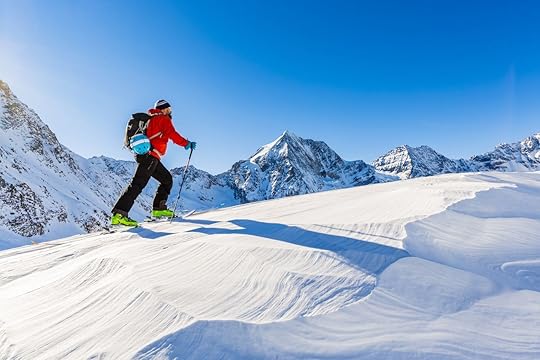
A few years ago, Erik Blachford hiked to the top of an inbound peak while skiing at Whistler Blackcomb Resort in British Columbia, Canada. After the effort, he looked to his right and saw lines of ski tracks. To his left was a wide open valley with perfectly untouched powder. It looked inviting.
Although a triathlete with intensive outdoor experience, Erik knew better than to take the bait of the pristine snow. He had no avalanche training, let alone equipment, and didn’t know his way around the out of bounds areas. Instead, he skied right, adding his own tracks to the well-traveled piste, and decided to find out how he could ski out of bounds.

Photo: Jiri Kulisek/Shutterstock
Blachford quickly learned that certified mountain guides with Extremely Canadian have been taking skiers into Whistler Blackcomb‘s backcountry for years. He set up a trip for himself and three family members. That day, he waited until morning to rent backcountry gear, which — combined with the obligatory avalanche discussion and equipment checks — meant they got a late start. Despite hours of hiking, Blachford only skied three runs that day.
No matter. He was hooked. Now, Blachford hits the Whistler backcountry at least twice a year, bringing his teen-aged kids with him. Every excursion with their mountain guide takes them — via gondola, chairlift, and t-bar — to the upper limits of the resort. From there, they trek at least an hour to access a gloriously empty, wide-open snow bowl where they ski their first run. Then, they put the sticky “skins” back on their ski bottoms and trek some more.
“It’s a completely different experience,” says Blachford of going backcountry. “I like to get away from the crowds. It’s more like hiking or mountain biking.”
Backcountry boom
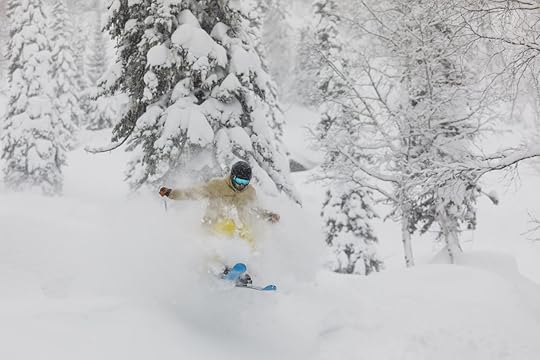
Photo: SibFilm/Shutterstock
While Blachford may be especially hardcore, he’s not alone. Ever more North Americans are going out of bounds — and resorts are rushing to offer their guests backcountry access.
“There wasn’t demand for resort-based backcountry in the ‘90s,” says Peter Smart, founder of Extremely Canadian, the Whistler-based guiding operation that has been on the forefront of resort-based mountain guiding. “Definitely in the last decade the interest has perked up,” says Smart, adding that in the last three years growth has been “exponential.”
Smart and other mountain guides we spoke with see a few factors driving the backcountry rush. One is simply the evolution of skis. Today’s wider skis make it easier to ski ungroomed runs, says Smart, meaning even intermediate skiers can tackle snow conditions that once required much more technical expertise.
A trend towards fitness and environmental awareness has also had an impact, Smart believes. When you go backcountry skiing — also called “alpine touring” — you’re getting an intense outdoor workout along with those sweet turns.
For triathlete Blachford, that’s part of the draw: “It’s part work and part fun,” he says of touring in the backcountry. He’s passed an appreciation for the physical effort onto his teens who, he says, “like to earn their turns.”
Resorts getting in on the action

Photo: HenryMichaelisPhotos/Shutterstock
Another factor is social media, which has piqued curiosity about the backcountry, says Dirk Bockelman, General Manager of Aspen Expeditions. Aspen Snowmass was one of the first US resorts to offer backcountry access, and Aspen Expeditions has been taking skiers beyond the boundaries since 1977.
Aspen was an outlier. Until recently, most resorts have felt little incentive to let skiers go out of bounds. Skiers accessing the backcountry from the resort often buy a single-use lift ticket, which costs much less than a whole-day pass. Plus, those skiers are carrying sandwiches in their backpacks, not spending their lunch money at the lodge.
More critically, once skiers are out of bounds, things can get dangerous… quickly.
Extremely Canadian’s Smart said over the years he’s heard plenty of “horror stories” from Whistler Search and Rescue. In Whistler’s Coastal Mountains range, a sudden change in weather can turn miles of visibility into a white-out. In those conditions, says Smart, “It’s so easy to get disoriented. People end up going on the wrong side of the mountain more often than not.”
In Lake Tahoe, Squaw Valley’s resort boundaries lead to snowfields with no easy route to a main road. The resort didn’t want to put skiers in a risky situation, says Sean Kristl of Alpenglow Expeditions. “They didn’t want people getting lost.”
While Alpenglow had long been guiding customers through expeditions as far away as Ecuador and Everest, in 2016 they received permits to lead backcountry skiers through the national forest land that abuts the Squaw Valley ski area. They approached the Squaw Alpine resort, offering to lead skiers into that coveted, yet perilous, terrain.
Alpenglow, whose guides are all certified by the American Mountain Guides Association (MGMA), told Squaw they could get skiers in and out of their backcountry in one piece — and the resort agreed. Squaw Valley now allows access to its National Geographic back bowl from its Granite Chief lift but only to skiers who’ve hired an Alpenglow guide. Anyone else hoping to ski that alluring powder has to trek in via a more distant access point.
Squaw’s change of heart reflects an awareness by resorts that the backcountry is booming, and that by permitting access to it from within the ski area, they can actually increase their offerings. Depending on their arrangement with the guiding company, resorts also get a slice of the hefty backcountry touring fee — which usually tops $200 per person.
More ski areas are following suit. While Jackson Hole, which sits on national forest land, has long offered guided backcountry access, smaller resorts like Kirkwood in south Lake Tahoe have recently included guided alpine touring as an option offered through their own ski school.
Just don’t call it “sidecountry”

Photo: Adam Melnyk/Shutterstock
Equipment manufacturers have been both drivers and beneficiaries of the backcountry boom. Aspen’s Bockelman says the biggest technical advances in ski equipment in recent years have been centered on alpine touring. Traditional ski makers like Solomon have entered the backcountry segment, and European companies like Dynafit, which specializes in touring gear, now sell in North America.
According to Kristl, annual reports produced by the Snowsports Industry of America confirm that “the biggest growth segment in ski equipment is in backcountry gear.”
To make going off-piste seem less daunting, manufacturers have come up with the term “sidecountry” to describe ski areas you can access directly from a resort. “The industry has been pushing quite strongly for the media to portray [that terrain]… as ‘sidecountry,’” says Bockelman. In reality, though, he says, “There’s no such thing as ‘sidecountry.’ If you’re on unpatrolled terrain, it’s backcountry.”
As soon as you cross the ski area boundary, you don’t have ski patrollers doing avalanche controls or even skiing there at all. Beyond the resort, you’re “… not in a controlled environment. You no longer have immediate access to first aid. You’re on your own and you need to be prepared to be self-sufficient,” says Extremely Canadian’s Smart.
“Sidecountry is a giant misnomer,” says Bockelman. “It’s been a big thing in the industry for promoting clothes and gear. It’s not a safer zone. It can be more dangerous because you’re getting to the snow without going up first.”
That means you’re accessing a slope without getting a feel for snow conditions that day. Also, reaching the backcountry from the top of a lift means you could be skiing something much steeper — and hence more avalanche-prone — than you might have hiked to from a roadside trailhead or another non-resort location.
Certified guides and avalanche training
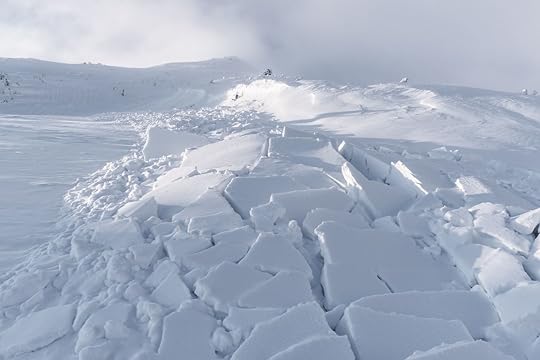
Photo: Smit/Shutterstock
While mountain guides may cringe at the term “sidecountry,” they universally embrace the idea of people getting out of bounds. They just want people to do it safely.
“We want to educate people on backcountry safety and etiquette. We want people to access the backcountry safely and wisely,” says Alpenglow’s Kristl.
Alpenglow started offering local guiding after recognizing that too many Americans were hitting the backcountry on their own, without proper training. “In Europe and Canada, it’s normal for people to hire a mountain guide,” says Kristl. In those places, mountain guides must also be certified. That’s not true in the US, so you should ask about a guide’s credentials.
“Other places around the world, you always have a guide,” says Bockelman. If you do plan to go yourself, he cautions that, “You need AIARE training,” referring to the acronym for the American Institute for Avalanche Research and Education. “You have no business going into true avalanche terrain without it.”
National Ski Patrol’s communications manager Candace Horgan says skiers heading into the backcountry should always check weather forecasts and local avalanche information centers. Beyond taking avalanche awareness classes, backcountry skiers should always carry a beacon, probes, and a shovel.
Horgan says she’s happy to see more people carrying the right equipment, but she adds that they also should practice using it beforehand. “You don’t want the first time you’re using it be when you’re digging someone out of an avalanche.”
In fact, all the mountain guide organizations we spoke with offer avalanche training courses, and they’re seeing more students every year. That’s a good thing because skiers setting off avalanches put not only themselves at risk but also any skier who might be below them, says Bockelman.
Lots of space to ski
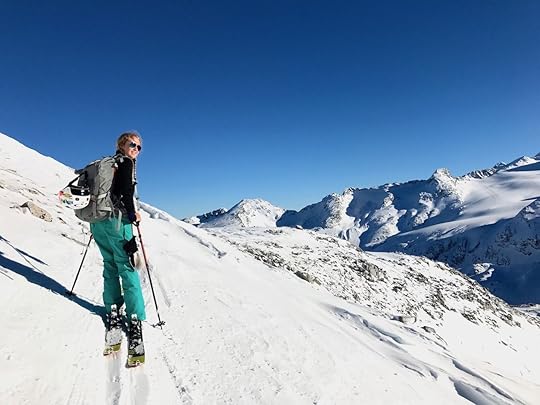
Photo: Noelle Alejandra Salmi
Despite the concern about inexperienced skiers, the backcountry is big, and guides don’t foresee a saturation point where the backcountry will have too many skiers any time soon. They all think the solitude and beauty of the backcountry is something more skiers should experience.
“We believe the healing nature of the mountains is a good thing,” says Alpenglow’s Kristl.
For his part, triathlete Blachford is spending more time skiing away from resorts this year. He just purchased his own touring gear and will spend a week off-piste in Europe this spring.
“I like the idea that skiing is about getting in there with the mountains and the environment around you,” says Blachford of his passion for the backcountry. “It’s about the outdoors.” 

More like this: How to plan a backcountry ski trip
The post Ski resorts across North America are finally opening up their backcountry appeared first on Matador Network.

French Broad River breweries tour

In case you haven’t heard, Asheville is a special place. As Asheville’s star rises on the national stage, it’s gained a reputation for two things above all else: an elite craft brewery scene and access to some of the best mountain recreation east of the Mississippi. Any given weekend, you’re sure to find tourists flocking to downtown breweries and cramming the scenic highways by car. But there’s a way to sample some of the best beers Asheville has to offer, notch an epic adventure, and escape the crowds — all at the same time: Hit the French Broad River. Here’s how.
Take to the river

Photo: Gingo Scott/Shutterstock
Where you’re going, you don’t need roads. The 218-mile French Broad River cuts a winding path through Asheville on its way to the Tennessee river, and thanks to the newly minted French Broad River Paddle Trail, it’s now possible to canoe camp from the river’s headwaters near Brevard all the way to just outside of downtown Asheville. Following this itinerary, you’ll spend three days and two nights on the river, hitting up a different brewery every day — plus a bonus brewery on your last day.
Before you go
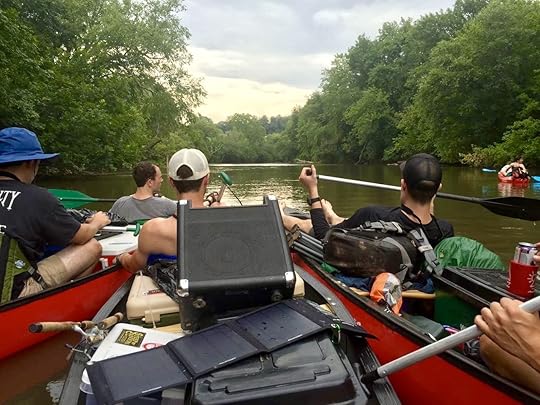
Photo: Patrick Cavanaugh
First things first: You’re going to need a boat. The trip goes faster by kayak, but you’re going to need lots of space for all the craft beer you pick up along the way, so it’s best to get a canoe. The best part about canoe camping is just how much stuff you can fit in your boat. When I’ve gone in the past, we’ve brought massive coolers, tents, camping chairs, liquor bottles, camp stoves, hammocks, bratwursts, solar chargers — even a high-powered portable speaker dubbed The Block Rocker. This is not roughing it in the remote backcountry. This is a suntanned, beer-soaked booze cruise, so don’t be bashful!
If you don’t own a canoe, worry not. The folks down at French Broad Outfitters have an armada of boats available for rent, and they happily accommodate multi-day trips, including the shuttle to the put-in. You’ll need to call to make reservations at least one week in advance, and make sure that you already have your campsites booked. Camping is only permitted by reservation at designated campsites through the French Broad River Paddle Trail website.
Camping at Rhodes Ranch for the first night and Firefighter Island for the second night is the best way to break up the mileage and maximize time spent at breweries along the way. Book your campsites at least a month in advance, especially during the summer months. One last thing: In addition to all the camping gear and booze, make sure you pack some trash bags to pick up your empties.
Day 1: shuttle, put-in, Oskar Blues

Photo: Patrick Cavanaugh
With 17 miles of paddling plus a brewery tour ahead of you, you’re going to want to get an early start. The shuttle from French Broad Outfitters will leave around 7:00 AM in order to get you to Hap Simpson Park just outside of Brevard by 8:30 AM. Either way, aim to have your canoes loaded up and on the river no later than 9:30 AM. The first five miles of paddling is some of the most technical, and it’s likely you’ll be alone for the ride.
The river is narrower and more choked here than it is closer to town, so you can expect a faster flow, plus overhanging branches, downed trees, and submerged limbs. I lost a fishing rod to an errant branch in 2016 and nearly tipped the canoe on a sunken tree in 2017, so keep your wits about you!
While the going is not so easy in this stretch, the water is quick, and you’ll be at your first take-out in no time. From the Wilson Bridge take-out, it’s only a short walk to Oskar Blues. Founded in Colorado in 2002, Oskar Blues opened its eastern outpost in 2012. Known for its laid-back attitude and cans-only approach to packaging, Oskar Blues is a staple of the region’s burgeoning mountain biking scene. Don’t be surprised to see some gnarly, mud-soaked bikers fresh off some singletrack in nearby Pisgah National Forest.
Head upstairs to the tasting room, or hang out by the outdoor bar and get some grub from the Chub Wagon, the on-site food truck. A burger and fries pairs well with Oskar Blue’s flagship Dale’s Pale Ale, a hopped-up ale with a nicely balanced malt flavor. Take a tour of the brewing facility then grab some easy-drinking Mama’s Little Yella Pils for the river.
Once you’re back on the river, it’s another 12 miles to get to Rhodes Ranch, a large partially wooded site with steps at the river’s edge for ease of access. The woods are perfect for hammock camping or getting a little shelter in case it rains. During the summer months, there should be a couple porta johns on site, so there’s no need to go squatting in the woods. Set up camp, make yourself a fire, and enjoy your first night of camping on the river.
Day 2: Sierra Nevada

Photo: Patrick Cavanaugh
With over 20 miles of paddling total, this is the longest day on the river. It’s best to fix a quick and simple breakfast to get out on the water early. You’ll notice the river starts to open up more here, making the paddling less technical. It’s likely you will still be the only ones on the river, so enjoy the sights as you pass through cornfields and cow pastures. You’ll be on the river for 14 miles before you reach Sierra Nevada’s newly built river access area.
Based out of Chico, California, Sierra Nevada spared no expense when it opened its North Carolina location in 2015. This gorgeous, massive facility includes hiking trails, an outdoor amphitheater, a full-service restaurant, an indoor music venue, a brewing and packaging facility, and even a gift shop. For a beer lover, it’s like some combination of Disneyland, Willy Wonka’s factory, and Hogwarts. This is one of the most visited sites in the Asheville area, so make sure you call a few weeks in advance if you want to take a guided tour.
As tempting as it is to stay in this craft beer paradise, you’ll need to give yourself enough time to paddle seven more miles before sundown, so pick up a six-pack of Torpedo IPA and get back to the boats. As you near Firefighter Island, you’ll notice some highways and shopping malls heralding your approach to the Asheville metropolitan area. Be careful in this stretch; if it hasn’t rained recently the river can be super low and a loaded-down canoe could easily get hung up on the rocks and riffles. Don’t be surprised if you need to exit your canoe and pull it a bit here.
Firefighter Island can feel a little cramped for a group of 10 or more. We had 12 guys with us in 2017, and we took up every bit of flat land there was. But what it lacks in space it makes up for in character, amenities, and proximity to town. A small trail connects four or five campsites along the island, most of which are right on the river, and a picnic table and a composting toilet make life a little bit easier. Plus, when you wake up in the morning, you’ll have one of the easiest paddles of the trip, setting you up for a fantastic finale.
Day 3: Wedge, New Belgium, and the take-out
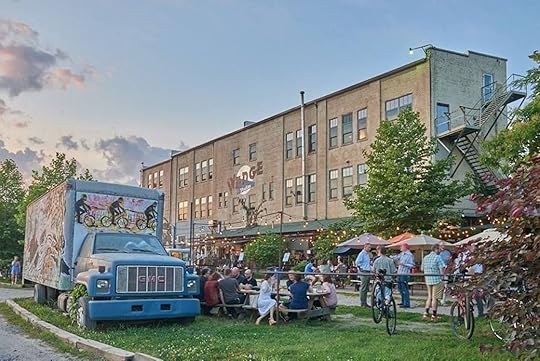
Photo: Wedge Brewery/Facebook
It’ll be 12 miles of paddling before you reach Asheville. About halfway through the ride, you’ll come upon the iconic Biltmore Estate on your right. The site of the largest private residence in the United States, the Biltmore bites a nearly 11-square-mile chunk out of Asheville. From the river, you’ll spot horseback riders, cow pastures, vineyards, and a glimpse of the famed 250-room chateau itself. Around this time you’ll also notice that you are no longer alone on the river. In the summer especially, this stretch of water becomes thick with boaters, tubers, and fishermen.
You’ll pass under several bridges as you approach Asheville’s River Arts District, an eclectic community of old warehouses and industrial buildings converted into art studios, chic galleries, and trendy restaurants. Scan the other side of the railroad tracks for Wedge Brewing on the right. Take out underneath the bridge and make the short walk across the tracks — watching for trains while you do — up to the brewery.
Occupying a bottom space in a converted studio once used by legendary metal artist John Payne, Wedge Brewing pays homage to the late sculptor through its outdoor patio, which is artfully assembled from salvaged metal, as well as its flagship Payne’s Pale Ale. Pick a seat in the shade, go play some cornhole, or grab a bite from one of the many excellent food trucks on rotation. But don’t fill yourself up yet. There’s still one more brewery to go.
After getting back in the water, it’s just a short float less than a mile downstream to New Belgium Brewing Company. Although you’ll see folks waving to you from the tasting room deck on the left, the take-out is going to be on the right side of the river. After crossing the bridge you’ll find two buildings on site. One is the massive brewing and packing facility, which you can tour — complete with a slide to take you to the bottom floor. The other is the tasting room, dubbed the Liquid Center or LC. In between and all around you’ll find an expansive and beautifully landscaped area complete with Adirondack chairs, cornhole boards, and even a fire pit. While New Belgium’s beers are available nationwide, the Asheville location keeps a few unique small-batch beers on rotation, so grab one from inside and head out to the back deck to wave at your fellow boaters and look back at the river that brought you here.
Once you’ve had your fill of beer, it’s just another couple of miles downriver to French Broad Outfitters, right back where you started three days ago. If you played your cards right you should have a nice tan from your time out in the sun, perhaps a bit of soreness from 55 miles of paddling, and maybe a little beer belly from all the craft brews.
But if you’re still looking for another drink on the river, head down the road to The Bywater where local brews and craft cocktails are served out of a cabin right on the French Broad, so you can continue your river revelry. After all, when you find something this good, why give it up? 

More like this: You can bike your way down this beer trail in British Columbia
The post Floating down Asheville’s river of beer appeared first on Matador Network.

Best breakfast in Asheville, NC

Asheville is a breakfast town. Whether fueling up for an adventure in the mountains or nursing a hangover from last night’s brewery hop, people in Asheville know the importance of the first meal of the day. Case in point: the insane number of breakfast options in the city, which can be daunting for locals and visitors alike. These are the eight best restaurants to eat breakfast in Asheville, North Carolina, as well as what to order at each place.
1. Biscuit Head

Photo: Biscuit head/Facebook
Established in 2013, Biscuit Head is husband-and-wife duo Jason and Carolyn Roy’s take on classic Southern breakfast food. Their Biscuit Head enterprise has since grown to three Asheville locations; one restaurant in Greenville, South Carolina; and a Biscuit Head cookbook. So what makes this place so special? It all starts, naturally, with the biscuits. Made in the traditional Southern “cathead” style — so named because they’re about as big as a cat’s head — Biscuit Head’s enormous, fluffy, golden beauties are the Southern staple at its best. Specialty biscuits are piled high with anything from brisket and pickled onion to mimosa fried chicken and sriracha slaw. Top it off with one of over a dozen specialty jams and preserves at the jam bar, or get a flight of three gravies with flavors such as espresso red eye and sweet potato coconut. A word of caution: Servings here are so massive that this may be the only meal you eat all day.
Where to go: The West Asheville location at 733 Haywood Road. Just be prepared to wait, as it’s not unusual for lines to wrap around the block.
What to get: The Pulled Pork Biscuit, piled high with slow-roasted pork, jalapeño pimento cheese, bacon, poached egg, and topped with maple syrup. Wash it all down with locally roasted PennyCup coffee or the house specialty Maple Bacon Latte.
2. Early Girl Eatery

Photo: Early Girl Eatery/Facebook
Located on the cobblestoned Wall Street across from the historic Flatiron building, Early Girl Eatery has been serving up made-from-scratch Southern breakfasts since 2001. Using locally sourced ingredients, Early Girl features new specials every day, as well as a seasonal menu. The restaurant was farm-to-table before it was cool, and while the menu is rooted in Southern tradition with classics like biscuits and gravy and shrimp and grits, there are also vegetarian, vegan, and gluten-free options. Breakfast is served all day, seven days a week, but as with all good things you may have to wait. This popular spot can be slammed on the weekends.
Where to go: While the downtown location at 8 Wall Street is charming, the crowds can be an issue. For a shorter wait time, try the new West Asheville location at 444 Haywood Road.
What to get: Spinach and potato cakes topped with tomato gravy and served with two eggs any style, plus a biscuit or toast. Have a cup of organic Dynamite Coffee, roasted in nearby Black Mountain.
3. Sunny Point Cafe
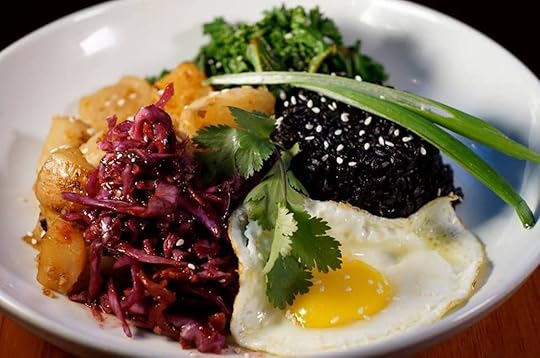
Photo: Sunny Point Café/Facebook
Sunny Point Cafe is the preeminent brunch spot in trendy West Asheville. Cozy and charming, Sunny Point’s limited seating is often dwarfed by its crowds. But don’t let a long wait turn you away. The shady patio waiting area is one of the most-Instagrammed spots in Asheville, and you can enjoy a coffee or Mimosa while you wait. There’s even live music on the weekends, making the wait as much a part of the experience as the meal itself. During the growing season, chefs source ingredients from the garden plot adjacent to the restaurant. The eclectic menu borrows from Mexican, French, and classic American cuisine, and if you ended up waiting past noon, don’t worry — breakfast items are available all day.
Sunny Point is more than just a force for good food. It’s also a source of good in the community. Every table features a donation envelope in which customers can leave a gift for the local charity of the month. Sunny Point will pass along all donations and match up to a certain amount per month. In 2018, the restaurant raised $20,517 for environmental non-profits, disaster relief, and more.
Where to go: Sunny Point is located at 626 Haywood Road.
What to get: Try the massive breakfast burrito, filled with eggs, chorizo, chiles, peppers, and onions, and topped with red salsa and cilantro crema. If you’re not too buzzed from that mimosa you had while you were waiting, try the craft Bloody Mary.
4. Ultra Coffee Bar

Photo: Ultra Coffeebar/Facebook
In the heart of Asheville’s bohemian River Arts District, this modern coffee shop with a full espresso bar serves up house-made pastries and baked goods along with some of the best breakfast sandwiches in all of Asheville. Ultra Coffee Bar also has some of the best vegetarian and vegan options, such as the Viva la Vegan bagel with tofu egg and vegan cream cheese or the Vegan Rad with tempeh bacon and a balsamic glaze. If you eat inside, check out the dozens of artworks for sale, all created by local artists. Sit outside when the weather is nice and watch the trains go by, then take a walk to some of the nearby art studios, such as the Odyssey co-op ceramic gallery or the North Carolina Glass Center.
Where to go: Ultra Coffee Bar is located at 242 Clingman Avenue.
What to get: The Brekkie Wrap: sausage, egg, cheddar cheese, spinach, tomato, and chipotle mayo, grilled and pressed in a spinach herb tortilla. To drink, try one of the specialty coffee drinks, such as the Nitro Cold Brew or the Rick James, which is a double shot of espresso with Mexican coke and vanilla syrup.
5. Tastee Diner

Photo: Tastee Diner/Facebook
In a food scene dominated by craft aiolis, artisanal goat cheeses, and avocado everything, Tastee Diner is refreshingly unpretentious. A classic, no-frills American flat-top diner, Tastee Diner may not have the most innovative menu around, but the place knows what it is, and the chefs cook up a damn good breakfast. With lots of fried eggs, breakfast meats, potatoes, and waffles, it’s true-to-form greasy spoon fare done uncommonly well. If the weather is nice, the picnic tables outside are excellent for people watching on West Asheville’s busy Haywood Road thoroughfare. Take a look at the vintage photos of Asheville inside to see the way it was before breakfast food was trendy.
Where to go: Tastee Diner is located at 575 Haywood Road.
What to get: It’s hard to beat the Hangover Hash-browns, a big pile of breakfast potatoes topped with two eggs, cheddar cheese, chili, and onions. And if you really are nursing a hangover, get yourself mimosas served by the pitcher.
6. TacoBilly

Photo: TacoBilly/Facebook
Drive around Asheville for long enough and you’re sure to see an orange goat sticker slapped to the back of someone’s Subaru. That would be the calling card for TacoBilly, the newest adventure for journeying owners Hunter and Beth Berry. A product of their Texas roots and the four years they recently lived in Mexico, TacoBilly’s menu mixes Tex-Mex fare like migas and agua fresca with down-home classics like bacon and potatoes. Handmade tortillas are sourced from a local tortilleria, and most meats, eggs, and cheeses are sourced from local farms. The Berry’s obviously went all-in on the goat theme. A giant orange goat mural covers the side of the blue building, and on the inside, an assortment of thrift-store oil paintings on the wall are dotted with the restaurant’s bright orange mascot. Many of the menu items are even named after famous “Billy’s.” Seating can be tight inside, but the cozy patio out back is the best place to sit anyway.
Where to go: TacoBilly is located at 201 Haywood Road.
What to get: The tacos are filling, but they’re so tasty that you’ll probably want two or three. The migas — piled high with fried tortilla, eggs, onions, tomato, jalapeño, and cheese — is a must, and you can’t go wrong with the Billy Joel: a classic combination of bacon, egg, and cheese. Wash it all down with a cantaloupe agua fresca and some PennyCup coffee.
7. Vortex Doughnuts

Photo: Vortex Doughnuts/Facebook
The only doughnut shop to make the list, Vortex is located in the same building as the award-winning Buxton Hall BBQ and local favorite Catawba Brewing in the bustling South Slope area of downtown. Made with flour sourced from a local mill, Vortex offers cake, yeast, and vegan doughnuts in a variety of flavors, glazes, and toppings. The offerings rotate on a weekly basis, but you can expect creative treatments like cream cheese thin mint or blueberry streusel. The spot has even been known to use malts from local breweries. Vortex also features a full-service espresso bar with barista creations.
Where to go: Vortex Doughnuts is located at 32 Banks Avenue.
What to get: The menu changes weekly, but keep an eye out for anything that has a glaze featuring nearby French Broad Chocolate Lounge products.
8. Over Easy Cafe

Photo: Over Easy Cafe/Facebook
Conveniently set in downtown Asheville, Over Easy Cafe is where to go for locavore cuisine. The coffee comes from Asheville-based Mountain Air Roasters; the bread comes from local favorites West End Bakery; and the eggs, meat, dairy, and produce come from nearly two dozen local farms and growers. As a result of this local sourcing, the menu changes with the seasons. The menu changes so often, in fact, that it’s not even posted on the website — you’ll have to check social media to see what’s cooking this week. But no matter what season you visit, you can expect fresh takes on classics such as omelets, benedicts, scrambles, and hashes, as well as an assortment of fresh juices and smoothies. The menu is also accommodating to gluten-free and vegetarian diet restrictions.
Over Easy Cafe is a cozy little joint and a local favorite, so you may need to wait for a table or space at the bar. If you’ve got some time to kill before being seated, head down the street to MTN Merch and browse the collection of apparel, CBD products, photography, and more.
Where to go: Over Easy Cafe is located at 32 Broadway Street.
What to get: The menu changes often, but it’s likely to have a breakfast sandwich served on fresh, locally baked bread. Get yourself a seasonal side and a fresh-squeezed juice to wash it all down. 

More like this: North Carolina is divided by two barbecue styles — but this is the best one
The post 8 places that prove nowhere in the US does breakfast like Asheville appeared first on Matador Network.

Rio gets new UNESCO recognition

It’s tough to top the distinct honor of being the first South American city to host an Olympic Games, but now UNESCO is naming Rio de Janeiro the World Capital of Architecture for 2020. It will become the first city in the world to receive this new designation. The title is an initiative to create a setting for international conversations on topics related to culture, heritage, urban planning, and architecture.
Ernesto Ottone R., UNESCO’s assistant director-general for culture, said in a statement, “The aim is to create new synergies between culture and architecture in an increasingly urban world, in which cities are hubs for ideas, trade culture, science, and social development.”
To celebrate Rio’s new title, UNESCO will collaborate with the city’s institutions, architects, urban planners, policy makers, artists, and writers to organize events to facilitate the exchange of ideas. The theme will be “All the worlds. Just one world,” which refers to a goal of the 2030 Agenda for Sustainable Development: “make cities and human settlements inclusive, safe, resilient and sustainable.”
Of the initiative, Ottone R. also said that it “will demonstrate the crucial role of architecture and culture in sustainable urban development,” and that it highlights UNESCO’s vision to “preserve architectural heritage in the urban context.”
A new World Capital of Architecture will be chosen every three years. 
H/T:

More like this: 9 fascinating examples of Soviet-era architecture
The post Rio de Janeiro named UNESCO’s first World Capital of Architecture for 2020 appeared first on Matador Network.

Best Picture noms filming locations

Every year between November and February, all of Hollywood glams up for the red carpet, and the rest of us kick back on a couch with the television on to watch it all unfold and judge. The Academy Awards is one of the most prestigious awards anyone in the film industry can receive, and as the oldest entertainment awards ceremony, all similar ceremonies, such as the Emmy and Grammy awards, are made in its image. Of all the Oscars a film can receive, Best Picture is typically the race everyone cares the most about, and this year’s crop of eight nominees take place all over the world. From a fried chicken shop in New Orleans to a palace in England, here are all the filming locations you can visit from this year’s nominees.
A Star is Born
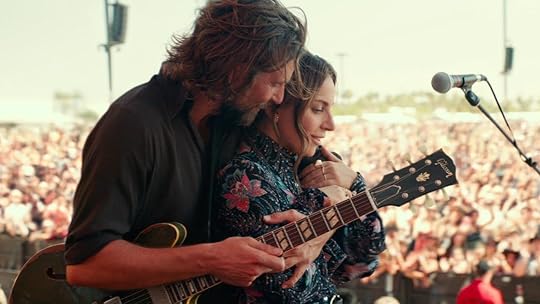
Photo: Warner Bros. Pictures
Bradley Cooper’s directorial debut is the fourth remake of this story and follows the love story between musicians Jackson Maine and Ally. A lot of scenes surround different concert performances and take place at locations like Coachella, Stagecoach, Glastonbury, and Saturday Night Live.
Principal photography for the film actually took place at Coachella in 2017 — in front of festival goers. Lady Gaga, who plays Ally, was headlining at the California festival, which takes place on two consecutive weekends in April. Filming took place during the week in between, and Gaga invited fans to come dressed in country-like fashion. Gaga told Entertainment Weekly, “When I actually look back at Coachella, it’s more Ally to me.”
For Glastonbury, filming took place during the actual festival, during four minutes of Kris Kristofferson’s set. Other concert scenes were shot around Los Angeles at places like the Greek Theatre, Regent Theatre, The Virgil, and The Forum. While it’s awards season, you can spot a replica of Ally’s billboard in LA across from the Chateau Marmont, just like it is in the movie, which Warner Bros. put up for awards buzz.
Black Panther
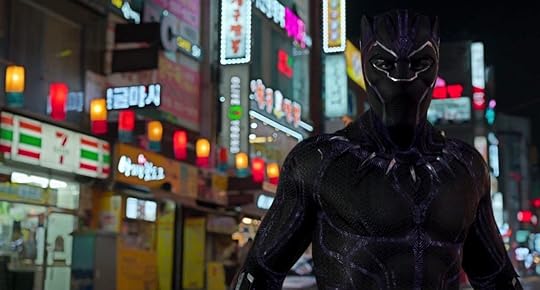
Photo: Marvel Studios
The groundbreaking Black Panther film is the first superhero movie to be nominated for Best Picture. It follows T’Challa, the Black Panther, as he assumes the Wakandan throne and the resulting conflict with antagonist Killmonger, who wants to end the nation’s isolationism. Wakanda not existing in real life may be one of the greatest tragedies this world has ever seen. Who wouldn’t want to live in a country so advanced? Virtually every disease is curable, the economy is as solid as vibranium, and there’s technology the likes of which have never been before. While you can’t visit the fictional African nation, you can still check out some of the real-world filming locations.
Generally, Marvel films base the majority of production in its studios in Atlanta, Georgia, but filming does use locations around the globe to add touches of reality to the superhero universe. One of the most epic scenes in the film happens early on — involving many of the main characters, such as T’Challa, Okoye, and Ulysses Klaue — in Busan, South Korea. The characters walk the streets of Busan, passing through markets, and the scene culminates in a car chase through its roads, providing a good look at the city through an interesting angle.
The landscape views of Wakanda are awe-inspiring, and actual aerial footage of South Africa, Zambia, and Uganda was used to create it. Iguazu Falls in Argentina was a significant filming location where several scenes occurred — such as T’Challa’s coronation ritual to become the next king.
BlackKkKlansman

Photo: Focus Features
Spike Lee’s latest film follows the true story of Ron Stallworth, an African-American detective who infiltrated the Ku Klux Klan. Set in 1970s Colorado Springs, much of BlacKkKlansman’s action takes place indoors and was filmed in Lee’s studio. Some interior shots were filmed in Lee’s hometown of Brooklyn, such as Stallworth’s apartment and the KKK initiation meeting.
There are several exterior shots, however, but due to budget reasons, those were filmed in Ossining, New York, rather than on location in Colorado Springs. “[Ossining] looked a little dated and not quite grown up completely, and still had some of those late 1800s buildings still in evidence,” Curt Beech, BlacKkKlansman’s production designer, told Indiewire. “And Ossining has a nice elevation that sat up just above the Palisades, and you actually get an automatic matte line that could then become Pikes Peak. Other residential exteriors came from Ossining as well, including homes that hadn’t been touched much over the years.”
Bohemian Rhapsody

Photo: 20th Century Fox
A biographical film about British band Queen, Bohemian Rhapsody follows the life of frontman Freddie Mercury. It begins with Mercury joining the band and follows Queen’s history up to the Live Aid performance in 1985. The actual Live Aid event itself took place at Wembley Stadium in the UK, but the movie was unable to film there. Instead, the crew recreated the stage at Bovingdon Airfield in Hemel Hempstead.
While the movie takes place in London, New York City, and Amsterdam, most of the filming was done in the UK. Some scenes in London couldn’t be shot at the actual locations, such as the college Mercury attended, Ealing Arts, which was instead filmed at the Old Town Hall in Bromley; parts of Camden, Lewisham, Kingston, Brentford, and Haringey were also used for a variety of the London scenes.
Other places in London were redesigned to be locations from New York and Amsterdam, such as a shoe store in Southwark doubling as a record shop in Amsterdam, and Union Street standing in for the infamous New York street where Mercury threw his manager out of a limo. Scenes surrounding Mercury’s last place of residence, Garden Lodge in Kensington, were filmed in a private residence on Ashcombe Avenue in Surrey.
The Favourite

Photo: Fox Searchlight
Starring a number of notable actors, such as Olivia Colman, Emma Stone, and Rachel Weisz, The Favourite is a combination of a period drama and a comedy. Set in the 18th century, it tells the story of two cousins competing to be the favorite of Queen Anne. Filming for the movie was all done in the UK. While some scenes were filmed at Hampton Court Palace in Molesley and Oxford, the majority of both interior and exterior shots were filmed at Hatfield House in Hertfordshire. As for the choice of location, director Yorgos Lanthimos told Kodak, “From the beginning, I had this image of these lonely characters in huge spaces.” You can tour both palaces; Hampton Court Palace even has an exhibit of costumes from the film through March. More costumes are on display at Kensington Palace, which is where many of the film’s historical events took place, though The Favourite was not filmed there.
Green Book
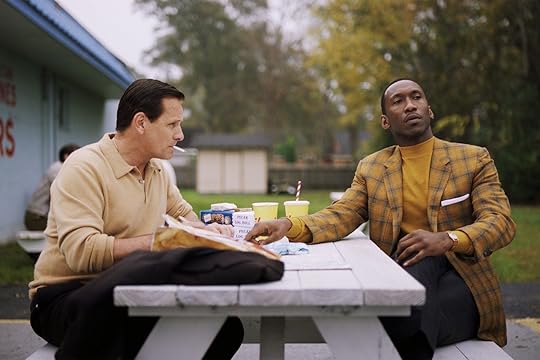
Photo: Universal Pictures
Taking place in the South in the 1960s, Green Book is based on the true story of co-writer Nick Vallelonga’s father’s friendship with African-American pianist Don Shirley. Vallelonga’s father was an Italian-American bouncer at Copacabana who, after the club shut down for renovations, became a chauffeur and bodyguard to the musician. Because Shirley needed a driver for his eight-week concert tour, the film is set in a myriad of locations, such as New York City, Memphis, and New Orleans.
While the characters toured parts of the US, the film’s cast and crew did not. All of it was filmed in Louisiana, bar one day in New York City where some driving scenes and NYC-specific exterior shots were taken. Locations in NOLA doubled as New York City locales, like the International House Hostel and Carver Theater for Copacabana scenes, and Sigle’s Antiques being used as a pawn shop. The film also stopped at many of NOLA’s historic theaters to shoot scenes for Shirley’s many performances, like the Orpheum and Saenger theaters. They also hit a variety of eateries, thanks to Vallelonga’s large appetite, which were filmed at real-life Louisiana restaurants like the Clover Grill in NOLA and Miss Anne’s Fast Foods in Amite.
Roma
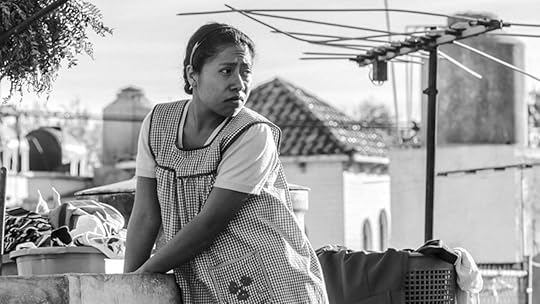
Photo: Netflix
Roma is a semi-autobiographical drama written and directed by Alfonso Cuarón, based on Caurón’s own life in Mexico City in the early 1970s. The black-and-white film is centered around the housekeeper of a middle-class family and paints a portrait of family issues through a greater social lens. The movie mostly takes place all around the Roma neighborhood in CDMX, which is also where the director himself grew up. Various shots of other spots in the capital city include famous sights like the Teatro Metropólitan.
Vice

Photo: Annapurna Pictures
Vice is another biopic that made its way onto the list of Best Picture nominations. Also a comedy-drama mix, the film is narrated by Kurt, a veteran from the Iraqi and Afghanistan wars, and is about former US Vice President Dick Cheney and his quest to become the most powerful VP in history. The film’s scenes take place all over, from Washington, DC, to Wyoming to the Middle East. You can, of course, tour the actual White House, but wanting to see the real-life center of the movie Vice would be a pretty weird reason to do so. 

More like this: 23 real-life settings you can visit from Game of Thrones
The post All the filming locations you can visit from this year’s Oscar Best Picture nominees appeared first on Matador Network.

'Roma' actor denied visa for Oscars

Getting to the Oscars should be hard because of the talent, dedication, and hard work required to receive a nomination — not because the government won’t give you a visa. For Mexican actor Jorge Antonio Guerrero, however, this is an unfortunate reality.
Guerrero plays the role of Fermín in Alfonso Cuarón’s Roma, a Netflix film that has been nominated for 10 Oscars, but he might not be able to attend due to his visa request being denied three times by the US government.
Likely making matters worse, this debacle took place during the government shutdown over border security. Although Guerrero may end up sitting out these Oscars, Netflix is still trying to help secure him a visa in time for the February 25 awards show.
In an interview with El Universal, Guerrero tried to keep things in perspective. “How many people does this not happen to?” he said. “How many people have to risk their lives to go to the United States, not to be invited to a red carpet, but to work?” 
H/T: The Daily Beast

More like this: The 9 most difficult travel visas for Americans to obtain
The post ‘Roma’ actor Jorge Antonio Guerrero might miss the Oscars because the US is denying his visa appeared first on Matador Network.

Matador Network's Blog
- Matador Network's profile
- 6 followers



